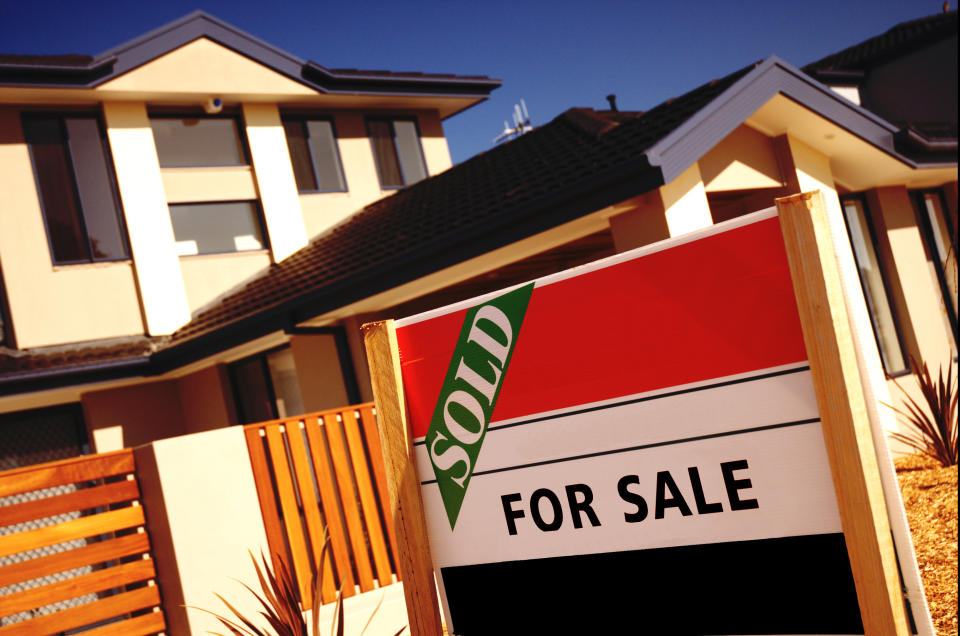Should you buy property now or wait two years? Here’s the verdict

They’re the questions on Australia’s mind: how much further will property values fall? And for how much longer?
While the property market decline does appear to be slowing, it’s also widening – so those questions are still literally million-dollar questions.
But that doesn’t mean buyers need to enter the property market blind, or in a panic.
“After numerous Saturday afternoons spent mourning another house that got away from them at auction, first home buyers can finally take a deep breath and think about their options,” Canstar finance expert Steve Mickenbecker told Yahoo Finance.
Related story: The regions getting the most out of budget…and the least
Related story: Here’s how long the Aussie property downturn will last
Related story: What the 2019 Budget means for our property markets
“With house prices falling, particularly in Sydney and Melbourne, the desperation to get into the market fast has faded.
“Not only can first home buyers hold out for the house they dream of, but they can hold out until they save more deposit and avoid lenders mortgage insurance.”
So here’s what would happen if you bought now
Scenario #1: Buy now
Buy today with a 10 per cent deposit and pay lenders’ mortgage insurance (LMI) on smaller 10 per cent deposit.
Purchase price: $530,999 (Based on median national unit price, Domain data)
Deposit of 10 per cent: $53,100
Loan amount: $487,075 (average first home buyer loan size)
Estimated LMI: $9,176
Monthly repayments: $2,531 over 30 years
Interest over the term of the loan: $424,100
Total repayments over the term of the loan: $911,175
Scenario #2: Delay by two years, 10 per cent price increase
Buy in two years with a 20 per cent deposit and no LMI. The market increases by 10 per cent.
Purchase price: $584,099
Deposit of 20 per cent: $116,820
Loan amount: $467,279
Estimated LMI: $0
Monthly repayments: $2,372 over 30 years
Interest over the term of the loan: $386,733
Total repayments over the term of the loan: $854,013
Scenario #3: Delay by two years, 10 per cent price reduction
Buy in two years with a 20 per cent deposit and no LMI. The market drops by 10 per cent.
Purchase price: $477,899
Deposit of 20 per cent: $95,580
Loan amount: $382,319
Estimated LMI: $0
Monthly repayments: $1,942 over 30 years
Interest over the term of the loan: $316, 791
Total repayments over the term of the loan: $699,110
It means that even if buyers wait two years and prices go up by 10 per cent, buyers are still better off than if they’d jumped in today and paid lenders’ mortgage insurance.
“When prices were going through the roof, it was easier to justify a $9,000 insurance premium. It gave buyers peace of mind that they were in the market and didn’t have to continue to chase prices further up,” Mickenbecker explained.
“But it also meant a bigger loan, which meant higher monthly repayments and interest over the life of the loan.”
These days, the fear of missing out isn’t as strong, he continued, and it means buyers can breathe out and take their time.
“In the changed world of today, if prices fall by 10 per cent, the required loan amount would likely decrease by $100,000, resulting in buyers having a higher deposit as they’re paying 10 per cent less for the house meaning they may not require lenders’ mortgage insurance.
“If the widely predicted downward direction for prices holds true, the case for wait and save more wins all round,” Mickenbecker added.
“The pressure is off first home buyers and they can make decisions in their long-term interests. It’s sellers that are now feeling the squeeze.”
Mickenbecker’s comments come as the Australian housing market continues its sustained decline, falling 0.6 per cent in the month of March.
Make your money work with Yahoo Finance’s daily newsletter. Sign up here and stay on top of the latest money, property and tech news.

 Yahoo Finance
Yahoo Finance 
